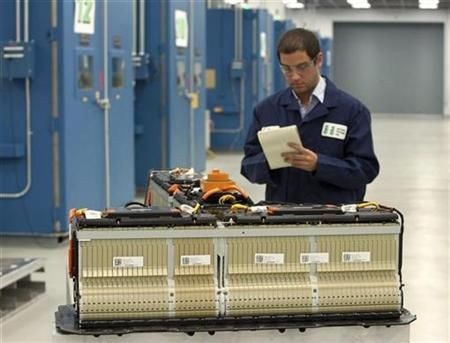Manufacturing powers ahead in January

The U.S. manufacturing sector grew at its fastest pace in nearly seven years in January, and prices paid jumped more than expected in the latest sign the economic recovery is gaining traction.
The Institute for Supply Management's monthly manufacturing survey fits into a pattern of steadily improving data and comes ahead of Friday's closely watched U.S. payrolls report expected to show the U.S. economy added jobs for a fourth straight month.
It's a good number, said Gary Thayer, chief macroeconomic strategist at Wells Fargo Advisors in St. Louis, Missouri. Manufacturing is outperforming other parts of the economy, but we're also seeing some inflationary seeds in costs rising.
Underscoring the uneven nature of the recovery, however, a separate report from the U.S. Commerce Department showed construction spending fell in December to its lowest level in more than 10 years as housing continues to struggle.
The Federal Reserve has argued that continued asset purchases are needed under its $600 billion program in order to support an economy that, while showing signs of improvement, is still far from full health.
The ISM manufacturing index climbed to 60.8 in January, the highest reading since May 2004 and well above analysts expectations. A reading above 50 indicates expansion.
The prices paid component of the index jumped to 81.5 from 72.5 the prior month, and the employment index reached its highest level since April 1973.
The most recent growth data showed the U.S. economy gathered speed in the fourth quarter to regain its pre-recession peak with a big gain in consumer spending and strong exports.
The economy grew at a 3.2 percent annual rate in the final three months of 2010, after expanding at a 2.6 percent pace in the third quarter, the Commerce Department said on Friday.
The Institute for Supply Management's monthly manufacturing survey fits into a pattern of steadily improving data and comes ahead of Friday's closely watched U.S. payrolls report expected to show the U.S. economy added jobs for a fourth straight month.
It's a good number, said Gary Thayer, chief macroeconomic strategist at Wells Fargo Advisors in St. Louis, Missouri. Manufacturing is outperforming other parts of the economy, but we're also seeing some inflationary seeds in costs rising.
Underscoring the uneven nature of the recovery, however, a separate report from the U.S. Commerce Department showed construction spending fell in December to its lowest level in more than 10 years as housing continues to struggle.
The Federal Reserve has argued that continued asset purchases are needed under its $600 billion program in order to support an economy that, while showing signs of improvement, is still far from full health.
The ISM manufacturing index climbed to 60.8 in January, the highest reading since May 2004 and well above analysts expectations. A reading above 50 indicates expansion.
The prices paid component of the index jumped to 81.5 from 72.5 the prior month, and the employment index reached its highest level since April 1973.
The most recent growth data showed the U.S. economy gathered speed in the fourth quarter to regain its pre-recession peak with a big gain in consumer spending and strong exports.
The economy grew at a 3.2 percent annual rate in the final three months of 2010, after expanding at a 2.6 percent pace in the third quarter, the Commerce Department said on Friday.
© Copyright Thomson Reuters 2024. All rights reserved.




















